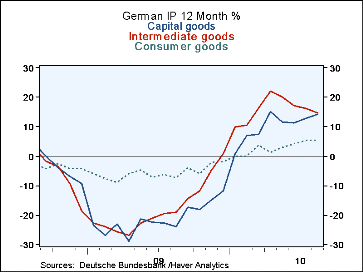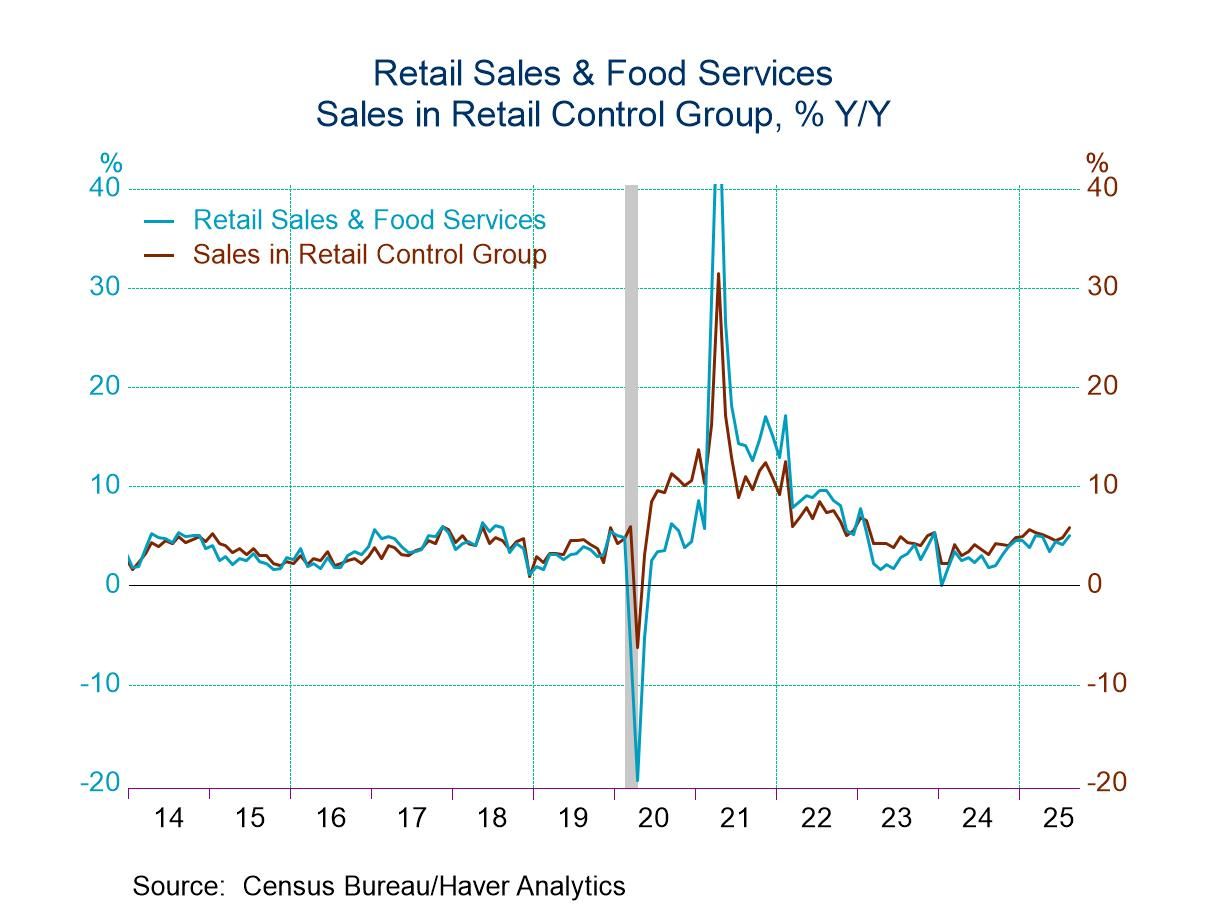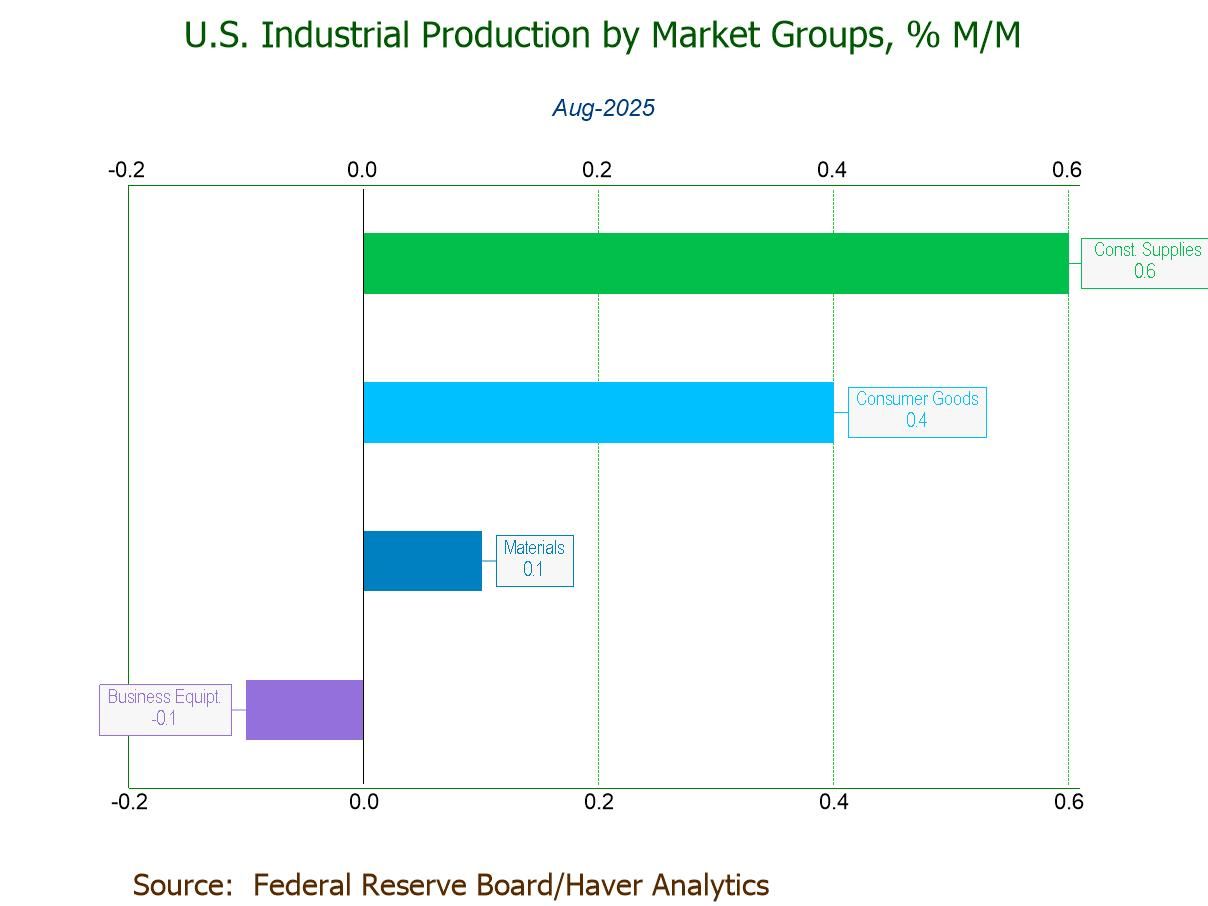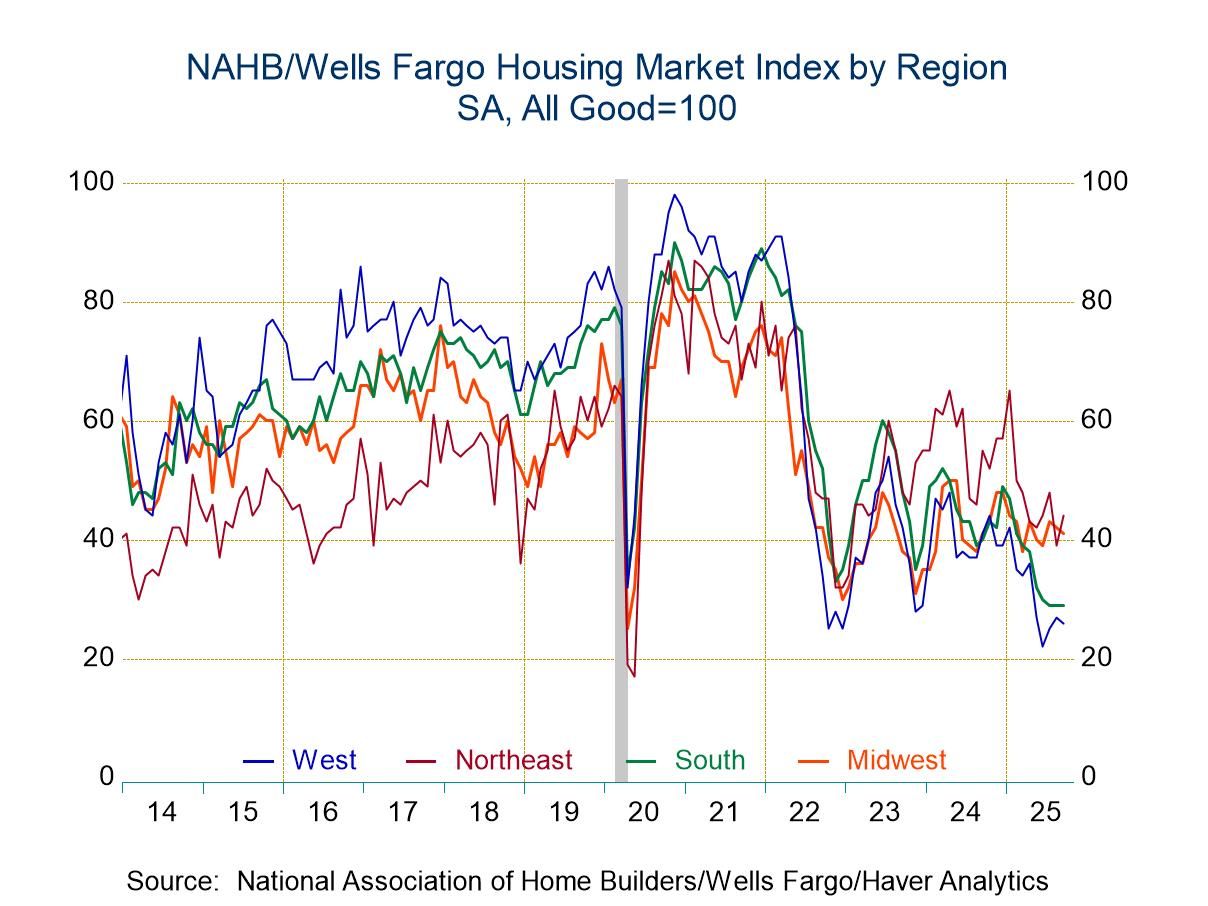 Global| Oct 07 2010
Global| Oct 07 2010German IP Rises But Intermediate And Consumer Goods Slow Their Pace
Summary
German IP rebounds but slows - The German industrial production index rose strongly in August after a modest rise in July and a drop in June. As a result of that pattern IP is in a bit of a slowdown mode in terms of its sequential [...]
 German IP rebounds but slows - The German industrial production index rose strongly in August after a modest
rise in July and a drop in June. As a result of that pattern IP is in a bit of a slowdown mode in terms of its sequential
growth rates measured from 12-months to 6-months to 3-months. The slowdown is not monotonic although for capital goods and
intermediate goods the 3-month rates of growth for output are below their respective 12-month rates as well as below their
respective six month rates adding to the sense of the slowdown being real. For consumer goods the 3-month growth rate is back
(down) to the 12-month rate indicating that there is less of a progressing weakness in that sector although it too has dropped
its rate of growth from its better six-month pace.
German IP rebounds but slows - The German industrial production index rose strongly in August after a modest
rise in July and a drop in June. As a result of that pattern IP is in a bit of a slowdown mode in terms of its sequential
growth rates measured from 12-months to 6-months to 3-months. The slowdown is not monotonic although for capital goods and
intermediate goods the 3-month rates of growth for output are below their respective 12-month rates as well as below their
respective six month rates adding to the sense of the slowdown being real. For consumer goods the 3-month growth rate is back
(down) to the 12-month rate indicating that there is less of a progressing weakness in that sector although it too has dropped
its rate of growth from its better six-month pace.
Quarter-to-date trends endorse notion of a slowing - With the strength in IP in August, however, the quarter-to-date (annualized) rates of growth are ahead of the 3-month rates of growth. Even so, those quarter-to-date rates remain below the Yr/Yr pace for intermediate and capital goods, in effect confirming a broader view of a slowdown.
Weighing and pooling the evidence: As we weigh the evidence it is clear that there is some sort of slowdown in place despite the August snap back. We already have German orders data in place and we have dissected those trends in an earlier report. We know that German orders are flying on demand from overseas and that domestic demand is weak. IP services both those trends. We know that they are moving in opposite directions.
Erosion in the fundamentals - The big concern in markets today is more foreign exchange-centric than growth-centric so economic reports are not moving markets. Still the forex movement will impact growth in the economy and, in the case of Germany, the ever-rising euro will crimp German firm’s ability to exploit export markets where orders have been strong. Even though Germany has seen a big bump up in investment goods orders within the Euro-Area where the one-currency area prevails, German exporters will find stiffer competition when facing exporters who compete for business in the zone and produce from another currency base where that currency is weaker. So having no currency issue within the Zone is not really the buffer it may seem for German exporters.
Dealing with volatility - It is always difficult to evaluate growth when it gets choppy. Germany this month, is a good example of that. Holidays, summer vacation schedules and weather can push IP around and make one month ‘too-weak’ and another 'too-strong.' It is hard to know how growth should be distributed and 'annualized when volatility strikes. But orders and IP are showing some of the same trends. We can be somewhat reassured that past weakness might not have been as bad as it seemed but we should not be too reassured that the current rebound reflects the economy's true ability to grow. The truth lies in between. And it seems that some degree of slowdown is part of that reality. How much we will discover in the months ahead. For now the rebound is reassuring and this slowdown effect many simply be slowing from a 'fast' recovery pace to a more sustainable pace or it could be something more severe. In part that depends on events, and some of those events are still playing out in the FX markets today.
| Total German IP | |||||||
|---|---|---|---|---|---|---|---|
| SAAR Except M/M | Aug-10 | Jul-10 | Jun-10 | 3-Mo | 6-Mo | 12-Mo | Quarter to-Date |
| IP total | 1.7% | 0.1% | -0.5% | 5.5% | 19.4% | 11.0% | 7.8% |
| Consumer | 0.6% | 0.7% | 0.0% | 5.2% | 9.2% | 5.4% | 7.9% |
| Capital | 2.6% | -1.0% | -0.2% | 5.9% | 21.2% | 14.3% | 7.7% |
| Intermed | 1.6% | 0.4% | -0.2% | 7.2% | 23.1% | 14.7% | 9.3% |
| Memo | |||||||
| Construction | -0.4% | 1.1% | -0.8% | -0.7% | 55.4% | 1.8% | -1.5% |
| MFG IP | 1.8% | -0.2% | 0.0% | 6.6% | 20.1% | 12.6% | 8.5% |
| MFG Orders | 3.4% | -1.6% | 0.0 | 23.9% | 29.3% | 21.2% | 12.3% |
Robert Brusca
AuthorMore in Author Profile »Robert A. Brusca is Chief Economist of Fact and Opinion Economics, a consulting firm he founded in Manhattan. He has been an economist on Wall Street for over 25 years. He has visited central banking and large institutional clients in over 30 countries in his career as an economist. Mr. Brusca was a Divisional Research Chief at the Federal Reserve Bank of NY (Chief of the International Financial markets Division), a Fed Watcher at Irving Trust and Chief Economist at Nikko Securities International. He is widely quoted and appears in various media. Mr. Brusca holds an MA and Ph.D. in economics from Michigan State University and a BA in Economics from the University of Michigan. His research pursues his strong interests in non aligned policy economics as well as international economics. FAO Economics’ research targets investors to assist them in making better investment decisions in stocks, bonds and in a variety of international assets. The company does not manage money and has no conflicts in giving economic advice.






